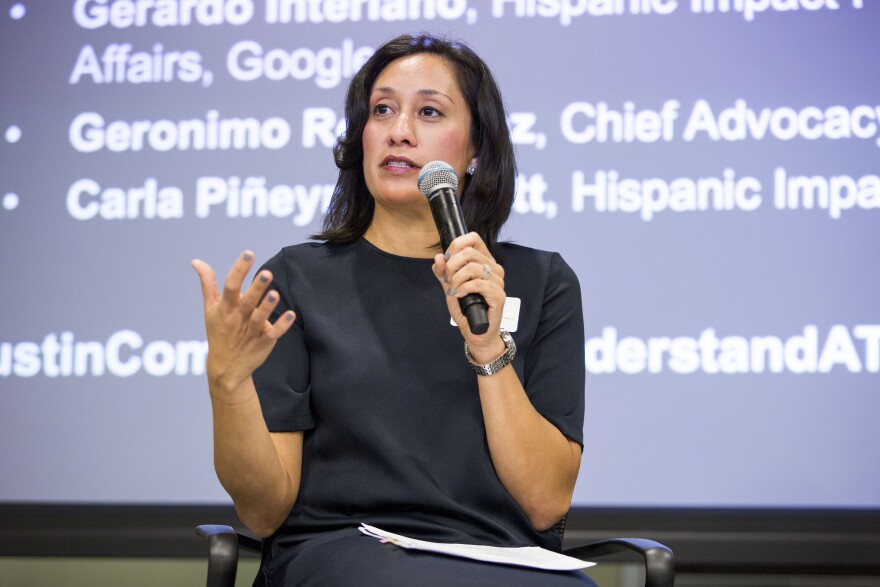Hispanic families in Central Texas don’t have the same opportunities to access health care, employment and early childhood education, according to a new report from the Austin Community Foundation.
Researchers with the foundation's Hispanic Impact Fund looked at data on residents of Travis, Williamson, Bastrop, Burnett, Caldwell and Hays counties. They found the average per capita income in Central Texas is around $32,000, but for Latino residents, it’s about half that amount – just more than $17,000 a year.
During a discussion about the report Tuesday, Geronimo Rodriguez, chief advocacy officer for the Seton Healthcare Family, said the findings shed light on overlooked populations.
“It’s the working poor,” he said. “It’s the Latino community. One of the things that comes up to me is that we have a young Hispanic community. … We have an opportunity to connect our local working-poor community to high-demand careers.”
Austin City Council Member Delia Garza, who also took part in the panel, said the findings represent the needs of people in her district in Southeast Austin. She said the city’s economic incentives should provide a broader range of jobs.
“For a long time, Austin has concentrated on technology and medical, which is important,” Garza said. “But we haven’t concentrated as much on manufacturing, and so I’ve been really pushing for jobs that have low barriers to entry.”
Researchers found that 35 percent of Hispanic children in the region live below the federal poverty level, compared to just 6 percent of white children. The report also found that less than a third of Latino children are considered “kindergarten ready.”
Carla Pineyro Sublett, co-chair of the Hispanic Impact Fund, said the data show Central Texas needs to invest in its Latino population.
“I mean, if our city is thriving with this sort of socioeconomic divide under the covers, imagine if we addressed this,” she said. “If we can actually change that trajectory, imagine what the economic implications are for Austin. They could be very, very powerful.”
The release of the report coincided with the release of a major plan to shape Austin’s future – CodeNEXT, the ongoing rewrite of the city’s land development code. If adopted, the rules will determine what can be built in the city and where it can go.

Garza said she wants the new code to increase housing in the city’s urban core, and that she hopes the debate around the code moves away from the rhetoric of protecting neighborhoods.
“I think we should be protecting neighborhoods from fires and bears, maybe,” she said. “But frankly, protecting neighborhoods has become a little bit offensive to me because what are we protecting them from? Families? Houses?”
Researchers with the Hispanic Impact Fund noted that almost 60 percent of Latino residents are spending more than 30 percent of their income toward a house or apartment.
Garza is part of a coalition of four City Council members who want the code to do more to address affordability, including adding new housing.
But when the latest draft was released Monday, the proposed rules reduced the amount of housing that could be added to Austin’s core neighborhoods.
“We’re a growing city,” Garza says, “and we need to be able to house our working families.”




